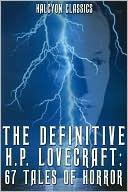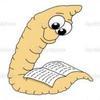
What’s The Colour Out of Space all about?:
This Halcyon Classics ebook contains sixty-seven of celebrated horror and occult writer H.P. Lovecraft’s best works central to his ‘Cthulhu mythos.’ Although Lovecraft’s (1890-1937) readership was limited during his life, his reputation has grown over the decades, and he is now regarded as one of the most influential horror writers of the 20th century.
The Colour Out of Space is the story of the strange and deadly effects of a meteorite from outer space crashing into a small town, leaving everything that lives there in grave peril.
What did I think?:
The third story in this huge collection of H.P. Lovecraft’s work, The Colour Out of Space is probably my favorite so far, which surprised me as I don’t generally read much science fiction. Somehow, Lovecraft makes everything that happens believable, which probably makes it more terrifying to read. The story begins when our unnamed narrator is visiting a deserted town that has a bit of a reputation, mainly whispers and gossips between the local folk about strange occurrences that have happened and continue to happen which is largely thought to be “just talk,” or stuff of legend. Our narrator wants to delve a bit deeper into what happened to the town so he visits the only inhabitant who remains near, Ammi Pierce who lives at a safe enough distance away that he dares to talk about the town’s past.
It all began when a meteorite struck the town, leaving behind an area known as “the blasted heath.” Scientists who rushed to analyze the object from space were dumbfounded as they could not conceive of what it was made from and noted that it did not react or respond to any manipulation from extensive chemical testing. Furthermore, the object showed a spectrum of colours that have never been seen before and cannot be explained, and seemed to shrink from day to day until it left merely a hole. After that, life seemed to go on as normal for the inhabitants of the town until they realised their crops and foodstuffs were growing bad, their animals were getting sick and dying, and strange footprints of mutant creatures were whispered about across the land. The area worst affected was the land of farmer Nahum Gardner, whose family quickly became endangered as they continued to drink water from the well on their property, despite the strange taste and the curious colours that the well now produced. The trees on his property seem to move even when there is no wind, and the animals that become sick are reduced to such a state that they die horribly “grey and brittle.”
Things become even worse for the family when they all start to succumb to a kind of madness, starting with Nahum’s wife, who rants and raves about strange colours and has to be shut in an attic room for her own safety. People start to leave the town in droves, frightened by what is happening on the small farm, and soon no-one is left to see what happens in the end, apart from Nahum who sees things so terrible that even he cannot speak of them. A reservoir is due to be built on the land, and Nahum is hopeful that this will mean an end to the strange goings-on yet unfortunately we feel that there is something always there lurking and waiting, biding its time.
This was a fantastic piece of writing which made me understand why Lovecraft is appreciated and enjoyed so much. As with the previous two stories that I have read, the vocabulary he uses is extraordinary – take this paragraph for example:
“but everywhere were those hectic and prismatic variants of some diseased, underlying primary tone without a place among the known tints of earth. The “Dutchman’s breeches” became a thing of sinister menace, and the bloodroots grew insolent in their chromatic perversion.”
When you first read it, it seems slightly heavy but I found myself really getting into the style and reading sections like this (of which there are many) again and again makes you really admire the way the author uses words and descriptions to set the scene and build up the tension in a story. Even though I’m not usually a fan of science fiction, I really enjoyed the other-wordly feel this tale had and even though it is quite obviously fantastical, Lovecraft had me believing every word while I was reading it.
Would I recommend it?:
But of course!
Star rating (out of 5):

NEXT SHORT STORY: The Blood Pearl by Barry Maitland from the collection The Mammoth Book of Best British Crime Volume 7

